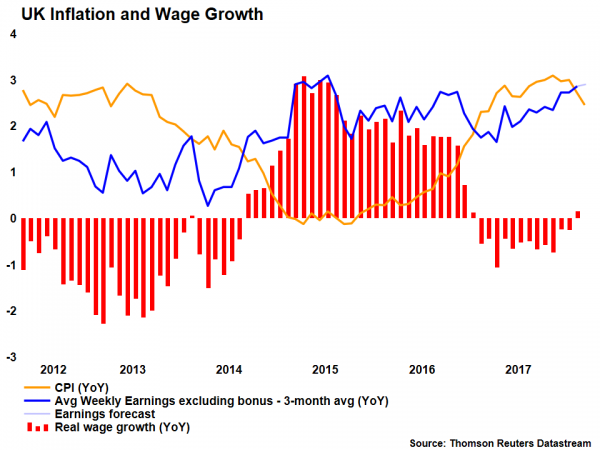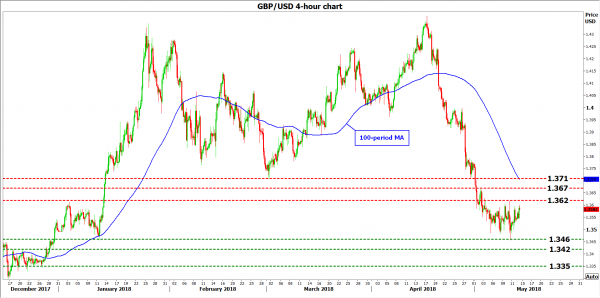The UK will release its employment figures for March on Tuesday, at 0830 GMT. Forecasts point to further progress in the labor market, which would likely be encouraging news for Bank of England (BoE) policymakers, who appeared quite cautious recently. A strong set of data could revive speculation for a near-term rate increase by the Bank, and perhaps help sterling to recover some of its latest losses.
The British pound has taken a beating over the past month, after a streak of disappointing economic data for Q1 diminished expectations for a near-term rate increase by the BoE, and led the Bank to shift to a more cautious stance at its policy gathering last week. The BoE signaled it will take the sidelines for some time while it monitors incoming data and assesses whether the economy’s Q1 softness was temporary, or owed to more persistent factors. Against this backdrop, investors will look to the employment figures for March – and predominantly on wage growth – for fresh signals on how the Bank may act at its upcoming meetings.
In March, the UK unemployment rate is projected to have held steady, after ticking down to a multi-decade low of 4.2% in February. As for average weekly earnings, forecasts are mixed. The figure including bonuses is projected to have cooled to 2.6% year-on-year from 2.8% in February, but the rate excluding bonuses is expected to have risen to 2.9%, from 2.8% previously. Although both measures are important, the BoE tends to pay more attention to the print that strips out bonuses, as bonus pay tends to be volatile.
Gauges of the labor market were rather upbeat in March. The Markit UK Report on Jobs showed another sharp increase in permanent staff placements, supporting the forecast for an unchanged unemployment rate. On wages, the survey found that temporary staff pay rose at the quickest pace since last September, adding credence to expectations for an acceleration in wage growth.
At the time of writing, the implied probability for the BoE to raise rates at its August meeting rests at 42%. A positive surprise in these data – for instance a downtick in the unemployment rate or a greater-than-expected acceleration in earnings – could push that probability higher and thereby, help the pound recover some of its recent losses. Looking at sterling/dollar, advances in the pair may encounter immediate resistance near 1.3620, the high of May 10. Further up, sell orders may be found at 1.3670, the top from May 2, and subsequently at the April 30 low of 1.3710.
On the other hand, and in case of a disappointment in these figures, support to declines in Cable may be found initially at 1.3460, a hurdle that halted the May 10 decline. A downside break of that zone would open the way for 1.3420, defined by the peak of December 20. If the bears overcome that area too, the December 26 low of 1.3350 may come into play.















